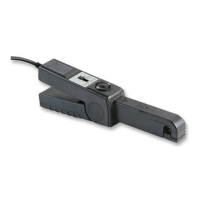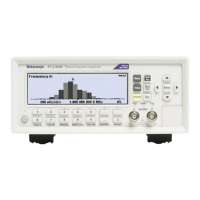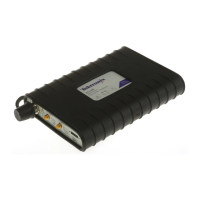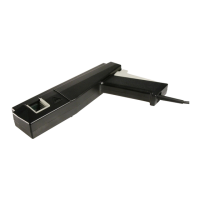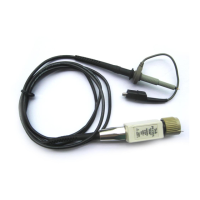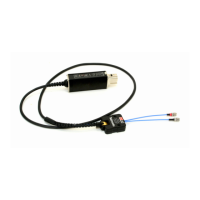High Voltage SourceMeter Instrument Reference Manual Section 6:
2470-901-01 Rev. A / May 2019 6-17
Using TSP commands to select a reading buffer:
To make a measurement and store the readings in a specific reading buffer, use the
smu.measure.read(bufferName) function. If you do not specify a buffer when you use t
he
smu.measure.read()
function, readings are stored in defbuffer1.
To measure voltage and store the readings in the voltMeasBuffer, send the following commands:
smu.measure.func = smu.FUNC_DC_VOLTAGE
smu.measure.read(voltMeasBuffer)
To measure voltage, store the readings in the voltMeasBuffer, and print the last reading in the
buf
fer, send the following command:
print(smu.measure.read(voltMeasBuffer))
To measure current, store the readings in defbuffer1, and print the last reading in the buffer, send
t
he following commands:
smu.measure.func = smu.FUNC_DC_CURRENT
print(smu.measure.read())
Using the front panel to store readings in the selected
buffer
Before you store readings, make sure the correct reading buffer is selected. See Selecting a buffer
(on page 6-14) for more information.
Each time a reading buffer is created, the instrument automatically selects the newly created buffer
as the active buffer.
To store a reading from the front panel, make a measurement. The buffer-fill indicators light up to
indicate that the buffer is filling. Depending on the size of the buffer, the lit indicator may be difficult to
observe. When all four indicators are lit, the buffer is completely filled. All the indicators will not be lit if
the number of readings stored is less than the selected buffer capacity.
To stop storing readings in a buffer when you are making continuous readings, select the trigger
mode indicator and select the Manual Trigger Mode. You can press and hold the TRIGGER key for
about 3 seconds to display the trigger mode window.
Stored readings are lost when the instrument is turned off or reset. Stored readings are also lost
when you resize a reading buffer.

